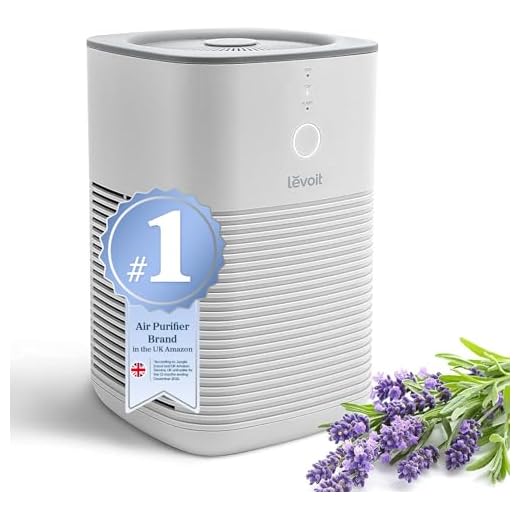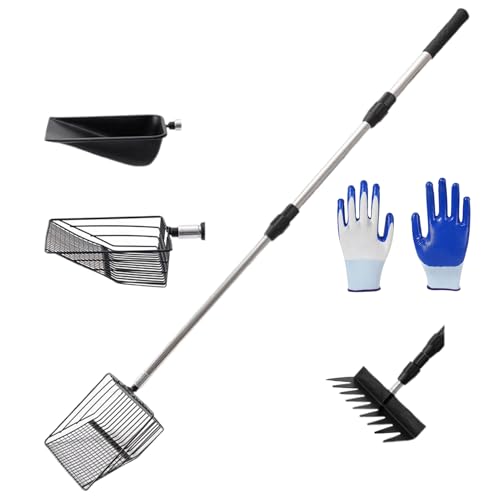








Using aromatic devices can pose risks for your furry friends, especially if you’re not careful with the ingredients used. Certain essential oils, commonly found in these products, can be toxic if inhaled or absorbed through the skin. For instance, tea tree oil, eucalyptus, and citrus oils are known to cause adverse reactions in canines. It’s best to avoid any product that lists these ingredients to keep your pet safe.
When I first got my dog, I was eager to create a pleasant atmosphere at home and turned to aromatic options. However, I soon learned that my excitement could inadvertently harm my companion. After noticing some unusual behaviour in my dog, I researched the matter and discovered that many popular oils can lead to symptoms such as lethargy, vomiting, or even more severe health issues. This prompted me to switch to pet-friendly alternatives, ensuring my furry friend wouldn’t be at risk.
In my experience, opting for devices specifically designed for pet environments is the way to go. Always check for labels indicating safety for animals and consult your veterinarian if unsure. Keeping your home inviting doesn’t have to come at the expense of your pet’s wellbeing. A little research and caution can make all the difference in ensuring a harmonious living space.
Safety of Aroma Devices for Canines
Using aromatic appliances around your canine companion requires caution. Many essential oils, while pleasant for humans, can cause adverse reactions in pets. Oils such as tea tree, eucalyptus, and citrus are particularly harmful. It’s crucial to ensure that any device used emits non-toxic compounds, as even small amounts can lead to gastrointestinal issues, respiratory problems, or skin irritations in your furry friend.
Choosing Pet-Friendly Alternatives
Opt for natural, pet-safe fragrances. Lavender and chamomile are generally well-tolerated by canines and can help create a calming atmosphere. Always check product labels for any potentially harmful ingredients. If you notice your dog showing signs of discomfort, such as excessive drooling, coughing, or lethargy, discontinue use immediately and consult a veterinarian.
Monitoring Reactions
After introducing any new aroma product, observe your dog closely. Each animal reacts differently, and what works for one may not work for another. Providing a well-ventilated space can also help reduce any potential negative effects. Keeping your canine’s comfort as a priority will ensure a pleasant environment for both of you.
Understanding Common Essential Oils and Their Effects on Dogs
Some oils can be harmful to your furry companions. Always research thoroughly before using any fragrance around them.
Common Oils and Their Risks
- Tea Tree Oil: Known for its antibacterial properties, tea tree oil can be toxic to pets, causing symptoms like vomiting and lethargy.
- Pine Oil: Often used for cleaning, this oil can irritate the respiratory system and lead to serious health issues in canines.
- Citrus Oils: Oils like lemon and orange can cause gastrointestinal upset and are generally unappealing to dogs.
- Lavender Oil: While often considered calming, lavender can lead to nausea or a lack of appetite in some animals.
- Peppermint Oil: This oil may act as a stomach irritant and could result in digestive problems.
Safer Alternatives
- Lavandin: A milder alternative to lavender, lavandin may be less likely to upset your pet.
- Sweet Orange Oil: In small amounts, this oil is generally well-tolerated and can provide a pleasant aroma.
- Frankincense: Some pet owners find that frankincense has calming properties without adverse effects.
Always consult with a veterinarian before introducing any of these oils into your home, especially if your furry friend has pre-existing health conditions. Monitoring their behaviour after introducing any new scent is crucial. If you notice any adverse reactions, discontinue use immediately.
Signs of Adverse Reactions in Canines to Aroma Devices
Watch for specific indicators that your furry friend may be having a negative response to aromatic devices. Common signs include excessive drooling, coughing, sneezing, or difficulty breathing. If your pet shows any of these symptoms, it’s crucial to remove them from the area where the aromas are being dispersed immediately.
Keep an eye out for changes in behaviour as well. Increased agitation, whining, or attempts to hide can suggest discomfort. Some pets might become lethargic or disinterested in activities they usually enjoy. Additionally, gastrointestinal issues such as vomiting or diarrhoea can occur if they have ingested any oils or if the scents are causing them distress.
| Symptoms | Possible Implications |
|---|---|
| Excessive drooling | Potential irritation of the mouth or throat |
| Coughing or sneezing | Respiratory distress or allergic reaction |
| Changes in behaviour | Discomfort or anxiety |
| Vomiting or diarrhoea | Possible ingestion of harmful substances |
If you suspect your pup is reacting poorly, consult with a veterinarian without delay. It’s better to err on the side of caution. For those curious about the ingredients in pet food, you might find this link helpful: why is everyone out of royal canin dog food.
Every dog is unique; what works for one might not work for another. Always observe their reactions and adjust accordingly to ensure their wellbeing.
Choosing Dog-Safe Scents for Your Home
Opt for natural aromas like lavender, chamomile, and cedarwood. These fragrances are generally well-tolerated by our furry friends and can even promote relaxation. I’ve found that a small amount of lavender in a room can help calm my pup during thunderstorms.
Always avoid citrus scents, as they can be irritating to a dog’s sensitive nose and may cause gastrointestinal issues if ingested. I learned this the hard way when I used a lemon-based spray, and my dog showed signs of discomfort.
Consider using products specifically formulated for pet-friendly environments. Many brands offer blends designed to be safe for animals. When I switched to a dog-friendly product, I noticed my dog was much more at ease and less anxious.
Before introducing any new fragrance, observe your pet’s reaction. Gradually allow them to get accustomed to the new aroma. If your dog shows signs of distress, like excessive barking or attempts to leave the room, discontinue use immediately. It’s all about ensuring a harmonious atmosphere for both you and your four-legged companion.
Lastly, ensure proper ventilation when using any fragrant item. Fresh air helps dissipate strong smells, making it easier for your pet to adapt. I always open windows or turn on a fan when trying out new fragrances, creating a comfortable space for my dog.
Best Practices for Using Scent Diffusers Around Pets
To ensure a harmonious environment when using aroma devices, consider the following guidelines:
- Choose Pet-Friendly Oils: Select oils that are known to be non-toxic to animals. Lavender and chamomile are usually safe, while oils like tea tree and eucalyptus should be avoided.
- Ventilation is Key: Always use these devices in well-ventilated spaces. This reduces the concentration of aromas and helps prevent potential reactions.
- Observe Your Pet: Keep a close eye on your furry friend when introducing any new scent. Look for signs of discomfort or distress, such as excessive scratching or changes in behaviour.
- Limit Exposure: Use the device in a separate area from where your pet spends most of their time. This helps minimize their exposure to the fragrance.
- Consult Your Vet: If you’re unsure about a specific oil, consult your veterinarian. They can provide advice tailored to your pet’s health needs.
- Start with Low Concentrations: Begin with a lower concentration of the aroma. If your pet seems comfortable, you can gradually increase it.
Additionally, I’ve found it helpful to research brands that specifically market their products as pet-friendly. Reading reviews from other pet owners can offer valuable insights into what works best. Remember, the goal is to create a pleasant atmosphere without compromising your pet’s well-being.
Consulting Your Veterinarian About Scent Devices
Before introducing any aromatic products into your home, it’s wise to consult your veterinarian. A simple conversation can provide invaluable insight tailored to your furry friend’s needs. Each canine has unique sensitivities, and a vet can help determine if particular fragrances might pose any risks.
During your visit, discuss any existing health conditions your pet may have, as these can influence how they respond to certain aromas. For instance, dogs with respiratory issues might react negatively to strong scents, while others may have skin sensitivities that can be exacerbated by certain ingredients.
Request specific recommendations for safe alternatives. Vets often have firsthand experience with products that are safe and effective. They may suggest brands or natural options that are less likely to irritate your pet’s delicate senses.
Keep an eye on your dog’s behaviour after introducing any new fragrant items. If you notice any unusual reactions, such as excessive sneezing or changes in mood, contact your vet immediately for guidance. They can help you assess whether the product is the culprit and advise on the best course of action.
Finally, don’t hesitate to reach out with any questions or concerns post-implementation. Regular check-ins with your vet can help ensure your home remains a comfortable space for your canine companion.
FAQ:
Are scent diffusers harmful to dogs?
Scent diffusers can potentially be harmful to dogs, depending on the type of essential oils used. Some oils, like tea tree oil, eucalyptus, and citrus oils, are known to be toxic to dogs. Symptoms of toxicity may include vomiting, drooling, and lethargy. It’s best to research the specific oils and consult a veterinarian if you’re unsure about their safety.
What essential oils are safe for dogs in diffusers?
There are a few essential oils that are generally considered safe for dogs when used in diffusers, such as lavender and chamomile. These can have calming effects and may help reduce anxiety in some dogs. However, it’s important to use them in moderation and ensure proper ventilation. Always monitor your dog’s reaction when using any scent diffuser.
How can I tell if my dog is having a negative reaction to a scent diffuser?
Signs that your dog may be having a negative reaction to a scent diffuser include excessive drooling, vomiting, coughing, sneezing, or displaying unusual behaviours such as hiding or becoming more agitated. If you notice any of these signs, it’s advisable to turn off the diffuser immediately and consult a veterinarian for guidance.
Can using a scent diffuser affect my dog’s behaviour?
Using a scent diffuser can influence your dog’s behaviour, particularly if the scent is calming or soothing. For example, lavender may help some dogs relax and reduce anxiety. However, if the scent is unpleasant to your dog or if it contains toxic oils, it could lead to stress or agitation. Always observe how your dog reacts to the scents being diffused.
What precautions should I take when using a diffuser around my dog?
When using a diffuser around your dog, ensure that the essential oils are safe for canine use. Keep the diffuser in a well-ventilated area to prevent the concentration of scents from becoming too strong. Monitor your dog’s behaviour closely and be ready to remove them from the area if they show signs of discomfort. Consulting your veterinarian for specific recommendations can also be beneficial.
Are scent diffusers safe for dogs?
While many scent diffusers are popular for creating a pleasant atmosphere in homes, their safety for dogs can vary based on the type of essential oils used. Some essential oils are toxic to dogs, including tea tree oil, eucalyptus, and citrus oils. If you use a diffuser, it is crucial to choose pet-safe oils, such as lavender or chamomile, and ensure that the area is well-ventilated. Additionally, observe your dog for any adverse reactions, such as excessive drooling, vomiting, or difficulty breathing. Always consult your veterinarian if you are unsure about the safety of specific scents in your home.










